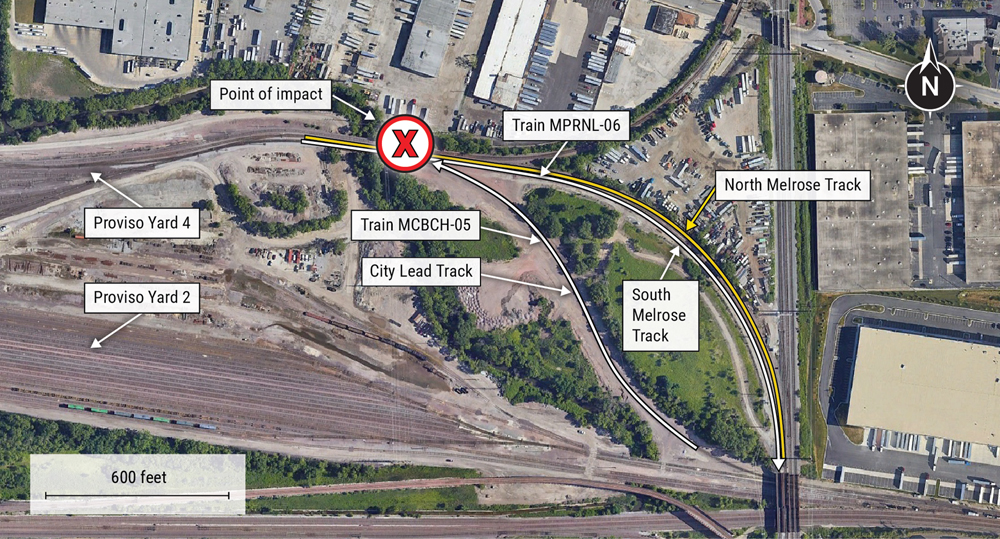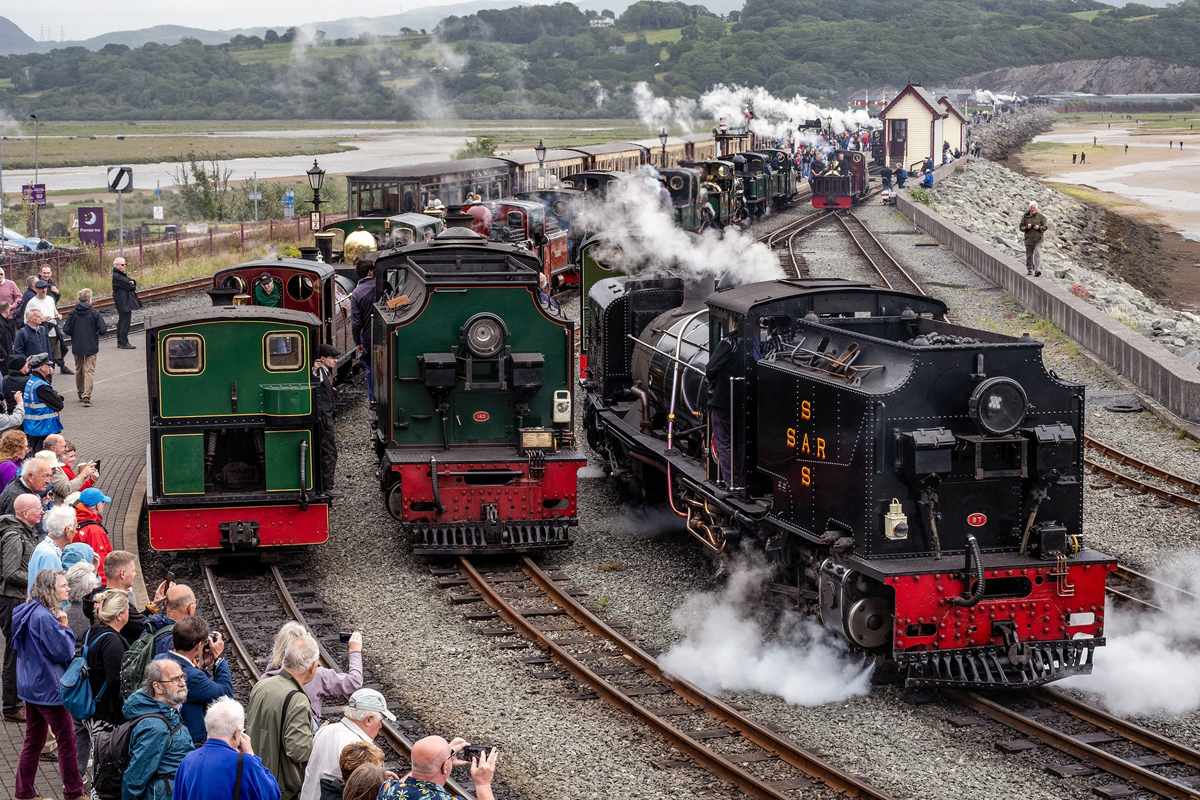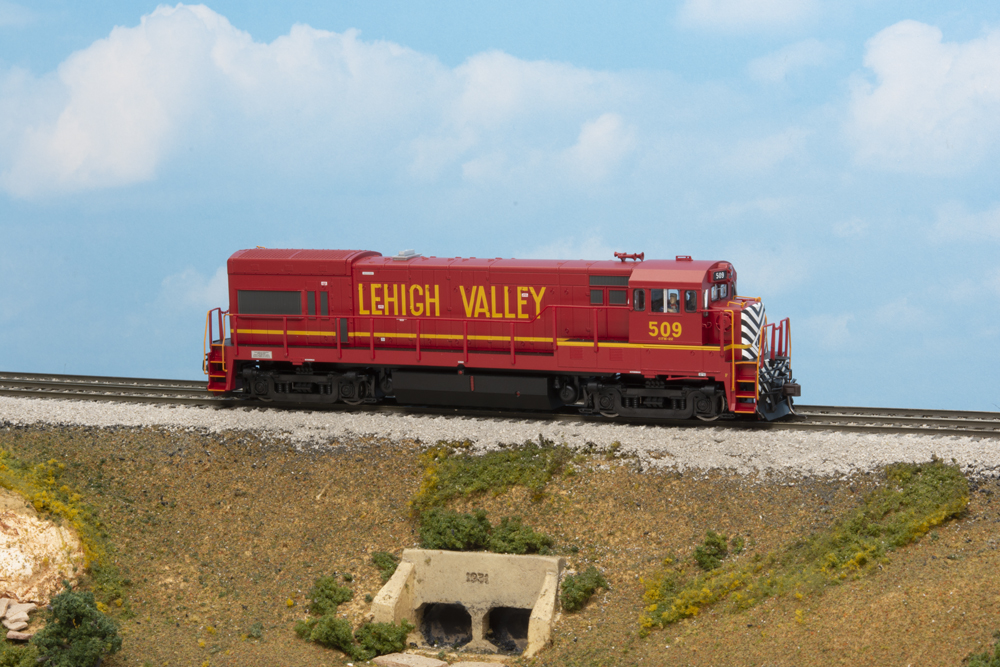
Atlas has re-released its HO scale General Electric U23B, this time with an available Electronic Solutions Ulm (ESU) LokSound V5 dual-mode decoder and several other refinements.
General Electric’s (GE) U23B was produced from August 1968 to June 1977. Featuring a 12-cylinder FDL diesel engine, it produced 2,250hp.
Most of the 1960s was dominated by horsepower wars between GE, Electro-Motive Division (EMD), and Alco. But as per-unit horsepower crested 3,000hp and continued upward, railroads realized their older, lower horsepower locomotives would also need replacing, and the jobs they were doing didn’t require high-performance diesel engines.
The response was to use smaller diesel engines, usually 12 cylinders instead of 16, which GE did by placing a 12-cylinder version of its FDL engine into what started out as a U30 car body. The shorter diesel engine required a shorter frame and two fewer doors to access the engine compartment, which are the two easiest to spot identifying features of the U23B compared to the U30B.
General Electric sold 481 locomotives to 17 original owners in North and South America (16 went to Peru). While not as popular as EMD’s GP38 models (which sold more than 2,600), the U23B was the second most successful of the Universal series locomotives.
Most of the locomotives rode on AAR Type B four-wheel trucks, but in 1973, GE delivered the first models with its Floating Bolster trucks to Louisville & Nashville. Locomotives for Chesapeake & Ohio and Western Pacific were equipped with rebuilt, traded-in EMD Blomberg trucks.
In North America, owners included Louisville & Nashville, which purchased 90 new units; Penn Central with 77; Southern with 70; and Santa Fe with 49. The first locomotives were delivered to Delaware & Hudson (16) in 1968 and the last to Conrail in 1977. By that time, Conrail had 99 U23Bs, inheriting all 77 of Penn Central’s and the Lehigh Valley’s 12 units in addition to 10 it bought new. Although no Canadian railroads purchased new U23Bs, two railroads south of the border, Nacionales de Mexico and Ferrocarril de Pacifico, purchased 30 and 10 respectively.
After working most of their lives on Class 1 railroads, U23Bs went to work for regionals such as the Guilford lines and the Reading, Blue Mountain & Northern. A handful of U23Bs continue in shortline and tourist train operation.
Locomotive features
Our model is decorated for the Lehigh Valley. These units were built for the bankrupt railroad in 1974, but were paid for under the legislation that would create Conrail, going to that railroad in 1976.
Trust plates on the rear end of the side sills, legible under magnification, indicate the locomotive is owned by the Consolidated Rail Corporation. The model is painted in a slightly “redder” Cornell Red than a Bowser locomotive I had to compare it with, but the exact shade of Cornell Red is hotly debated. It certainly looks to be in the ballpark based on photos I referenced in several Lehigh Valley color guides we have in our library.
The paint is smooth and opaque, and the yellow Lehigh Valley lettering covers the Cornell Red well with no voids over the car side doors. The black and white stripes on the nose and pilots are another highlight of the paint job, and the grab irons and handrails at the steps are all picked out in orange – good attention to detail!
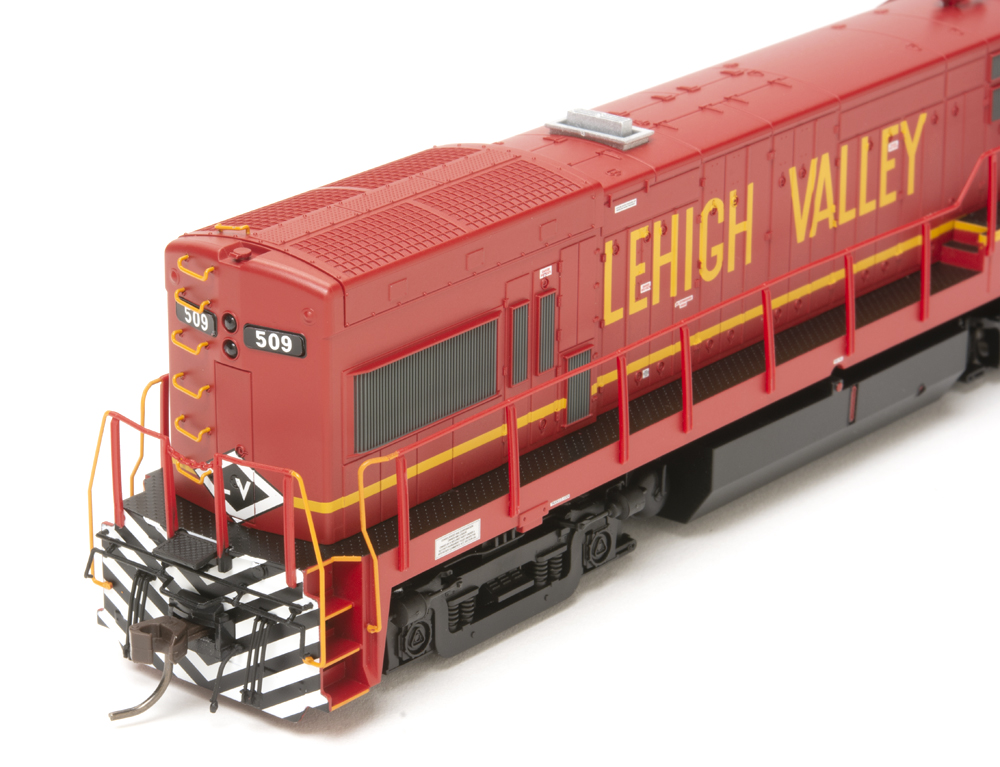
Speaking of detail, there are flexible m.u. hoses on the pilots, and they thread through a plow on the front. The drop steps on the end railings are positionable. The cab has a blade-style antenna on the roof and windshield wipers on its front. The trucks have separately applied brake cylinders.
The only things missing were cab sunshades and bearing caps on the trucks – the Lehigh Valley’s U23Bs didn’t have visible roller bearings as depicted on our sample’s AAR Type B trucks. The exploded view drawing packed with the model shows the covers as part no. 800312.
Since I have one of the early 1990s versions of this model, I compared them for changes. Two things stand out. The sand filler caps are now separate pieces, and the trucks now have separate brake cylinders. Windshield wipers and crew figures in the cab are other added details.
I removed the body shell by unscrewing the coupler draft gear boxes from each end and pulling them free. Then I used a small, bladed screwdriver to release the two tabs over the rear trucks. With those out of the way, I was able to wiggle the body shell free.
Under the hood
Under the hood is a die-cast metal frame. The five-pole, skew-wound can motor is mounted in the center of the frame with brass flywheels at each end. All eight wheels are driven and pick up electricity.
Metal weights are attached to the frame above the trucks. A motherboard is screw-mounted to the weights and has the ESU LokSound V5 decoder mounted to it with a 21-pin plug. A rectangular speaker is mounted facing down in an enclosure over the rear truck. While the new chassis looks largely the same as my earlier model, there are multiple changes to accommodate Digital Command Control (DCC) and sound options as well as other refinements.
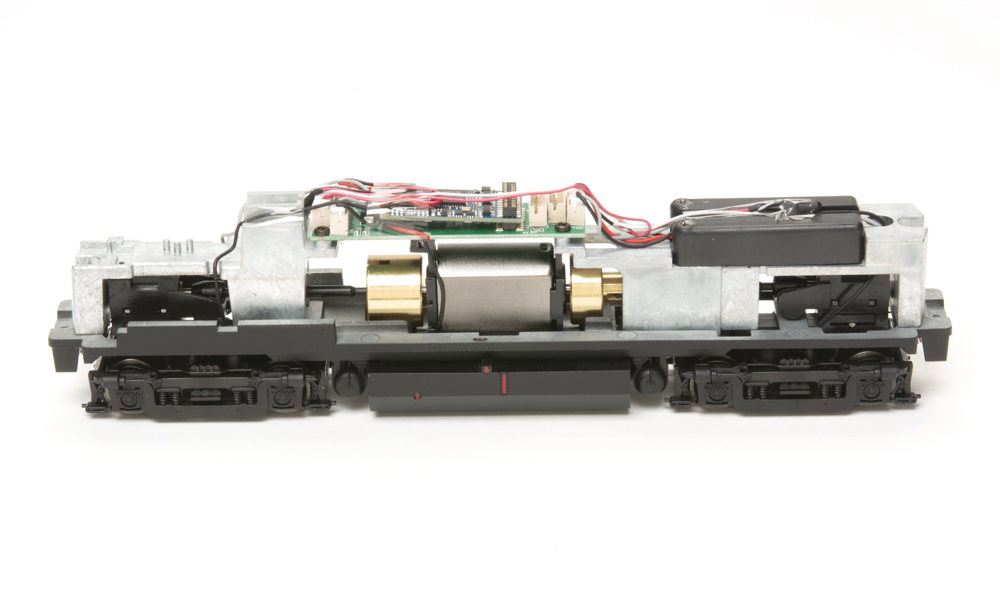
the motherboard attached above the motor.
On the test track
I started testing the model using a direct current (DC) power pack. Sounds came on at 8V, and the locomotive started to move at just under 2 scale mph at 10V. At 12V, the model was moving at 43 scale mph, and by 14V, it had reached 84 scale mph. The GE U23B was available with gearing for 70, 75, or 79 mph top speeds.
A brake squeal sounded when I dropped the voltage quickly, and the headlight was directional.
On DCC, the model started moving in speed step 2 at just under 2 scale mph and reached a top speed of 75 scale mph at speed step 28. The 14.5 ounce model produces 3 ounces of drawbar pull, equivalent to 43 freight cars on straight and level track. On our staff railroad, the Milwaukee, Racine & Troy, the Atlas U23B pulled 14 cars up the curving 3 percent grade to the top of the layout.
I also tested the locomotive on my home switching layout, where it easily negotiated the Atlas no. 4 Custom Line turnouts in the yard ladder. While these U23Bs never worked an industrial lead for the LV, the smooth operation and burble of the FDL diesel engine made it fun to shift a few cars around.
With new sound from ESU and upgraded painting and details from its first release, these mid-sized locomotives are worthy of a place on model railroads set in the ’70s and ’80s, and short lines up to today. I know I can find a home for a few pulling hotshot TOFC freights on my future layout!
Facts & features
Price: $289.95 (DCC and sound) $179.95 (DC, no sound)
Manufacturer
Atlas Model Railroad Co.
378 Florence Ave.
Hillside, NJ 07205
atlasrr.com
Era: 1974-1976 (as decorated)
Road names: Lehigh Valley; Atchison, Topeka & Santa Fe; Chesapeake & Ohio (Chessie System); Conrail Express (RBMN); Delaware & Hudson; Missouri Pacific; Southern Ry., and undecorated
Features
21-pin socket for DCC decoder
(Silver Series model) Accumate knuckle couplers,bat correct height
Blackened metal wheels, in gauge
Directional lighting with golden-white LEDs
ESU LokSound V5 dual-mode decoder (DCC-equipped models)
Five-pole skew-wound motor with dual flywheels
Painted crew members in cab Snowplow and separately applied scale detail parts as appropriate per road name
Weight: 14.5 ounces






